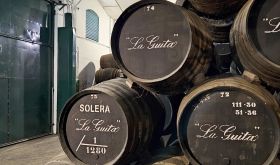Full-size bottles from €11.40, $14.50, HK$121.66, 142 Norwegian kroner, £15.90, SG$33, 720 New Taiwan dollars, 169 Danish kroner
In a subject as complex as wine, generalisations are rarely useful but I'm pretty sure none of us is drinking enough Moscato d'Asti.
There are several other candidates fighting for our attention in wine's relegation zone: madeira, sherry, port, even Sauternes – but they all have a few fearless cheerleaders. In the UK, the biggest buyer of Moscato d'Asti may well be the Institute of Masters of Wine, such is the frequency of its appearance in the exams and course days – especially since Moscato d'Asti's most enthusiastic individual consumer, Michael Broadbent MW, passed away last year.
The problem with all these styles is their perception as 'occasion' wines, to be drunk only with dessert, when on holiday, in front of a roaring log fire, or sometimes all three. But when a Moscato d'Asti is as good as the 2020 vintage produced by G D Vajra, no excuse is needed to open a bottle.
What makes it so good? There are three unique qualities that we should cherish. Firstly, it really does smell and taste of grapes, unlike almost all other wines, and grapes taste delicious. Secondly, it has only 5.5% alcohol, which makes it drinkable with abandon. (Indeed, those first two points are closely related, since the interrupted fermentation process that keeps the alcohol low also retains those pure, unconverted grape flavours.) Thirdly, it is frizzante, which is not only an excellent word, but indicates a lightly sparkling style that I can't think of in any other wine.
The result is a foaming glass of sheer, unadulterated joy that I challenge anyone to drink without a smile.
Vajra's Moscato grapes come from the summit of the Riforno vineyard's steep slopes (pictured above, courtesy of piazzo.it). After hand-harvesting, vinification is technical and straightforward, utilising temperature-controlled stainless steel to achieve the required semi-fermented style.
The resulting wine is, of course, also high in sugar – in fact, an especially high 161 g/l for the 2020 vintage – and fairly low in acidity. Such qualities are distinctly out of fashion these days, which is pure fickleness of course, but at least that keeps the wine affordable. As well as those strong grape flavours, there is also elderflower cordial and honey to add modest complexity.
While I would argue that it makes a wonderful drink at any time, there are several occasions when Moscato d'Asti really comes into its own. As an accompaniment to dessert, it is not only sufficiently sweet and flavoursome to match a range of puddings, that low alcohol is a positive relief compared with most sweet wines, which are frequently 14%, and much higher if fortified. I recently matched this Vajra to a spiced rice pudding and it was a perfect pairing.
However, it was also surprisingly good with a medium-hot chilli con carne, where the sweetness acted as a foil against the heat, and by the same logic it would go well with various curries too.
No excuse is needed to enjoy this wine, especially since it is widely available in half-bottles, and I would urge wine-lovers worldwide to reacquaint themselves with the fizzy equivalent of pure escapism. In the COVID-19 era, here is a Moscato d'Asti that deserves to go Vajral.
To learn more about Moscato d'Asti, including the recent emergence of a dry version, read our Italian expert Walter Speller's in-depth article.















